I'm trying to do find the voltage over R1 in the following circuit, where L1/L2 is an ideal transformer. LTSpice complains that the "Matrix is singular". Why? I've tried to play around with lots of different values in order to see if it's a problem with approximation.

The numbers after "AC" are the max amplitude and phase (in degrees).